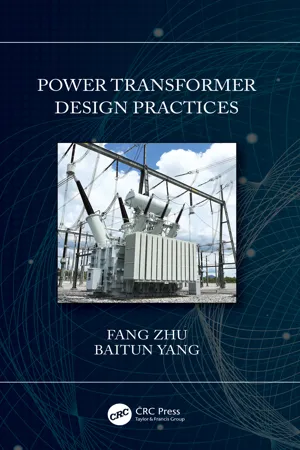
- 266 pages
- English
- ePUB (mobile friendly)
- Available on iOS & Android
Power Transformer Design Practices
About This Book
The book presents basic theories of transformer operation, design principles and methods used in power transformer designing work, and includes limitation criteria, effective utilization of material, and calculation examples to enhance readers' techniques of transformer design and testing.
It includes:
-
- Core and winding commonly used, and their performances
-
- Insulation structures and materials, methods for improvements on dielectric strengths on partial discharge, breakdown and electrical creepage
-
- Losses and impedance calculations, major influential factors, and methods to minimize load loss
-
- Cooling design and the method to obtain effective cooling
-
- Short-circuit forces calculations, the ways to reduce the short-circuit forces, and measures to raise withstand abilities
-
- No-load and load-sound levels, the influential factors and trends, and abatement techniques
-
- In-depth discussion of an autotransformer's special features, its stabilizing winding function, and its adequate size
-
- Tests and diagnostics
The ways to optimize design are also discussed throughout the book as a goal to achieve best performances on economic design.
The book contains great reference material for engineers, students, teachers, researchers and anyone in the field associated with power transformer design, manufacture, testing, application and service maintenance. It also provides a high level of detail to help future research and development maintain electrical power as a reliable and economical energy resource.
Frequently asked questions
Information
1Introduction
1.1Basic Theory
1.1.1Voltage and Current of Windings
Table of contents
- Cover
- Half Title
- Title Page
- Copyright Page
- Dedication
- Table of Contents
- Preface
- Authors
- Chapter 1: Introduction
- Chapter 2: Core
- Chapter 3: Windings
- Chapter 4: Insulation
- Chapter 5: Impedances
- Chapter 6: Load Loss
- Chapter 7: Cooling
- Chapter 8: Short-Circuit Obligation
- Chapter 9: Sound Levels
- Chapter 10: Autotransformers
- Chapter 11: Testing
- Index